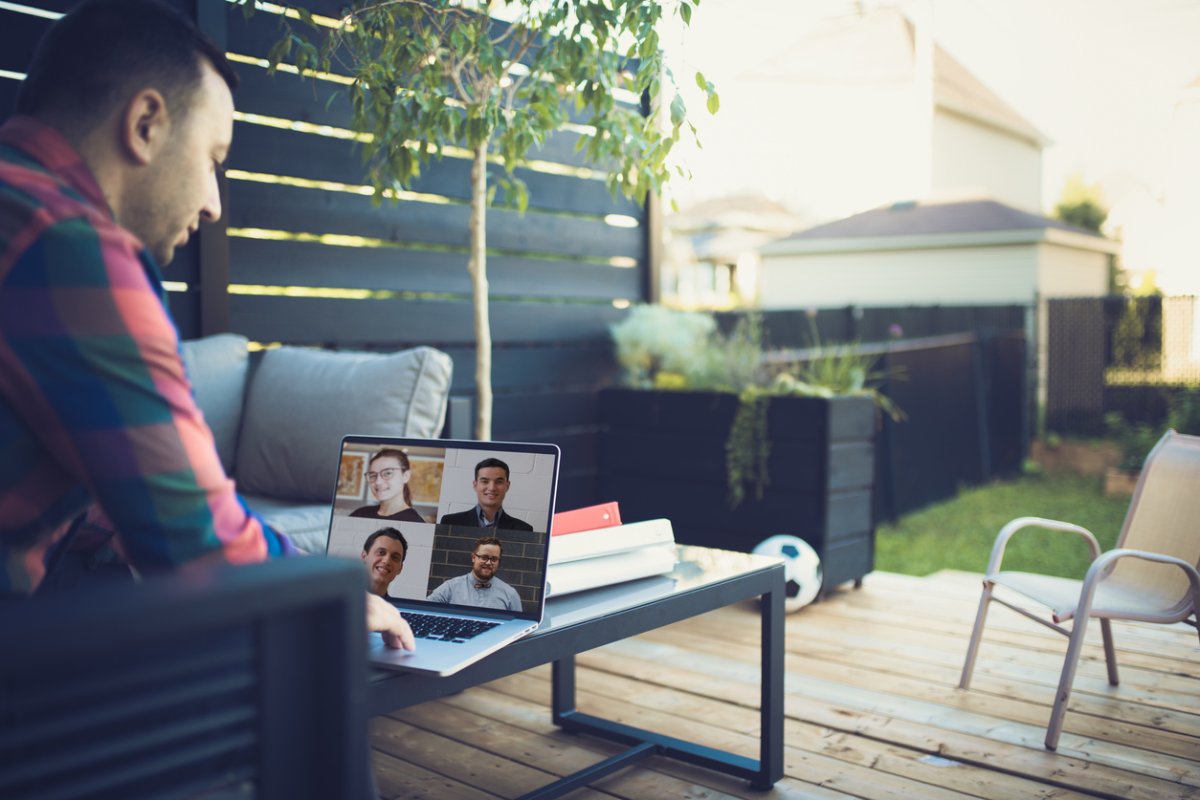We may earn revenue from the products available on this page and participate in affiliate programs. Learn More ›
Work in the Great Outdoors
It’s becoming more and more common for now to have the option of working from home. The move from a corporate environment to a home-based office allows for a lot of flexibility, including creating an outdoor office.
Working in the outdoors has benefits that go well beyond financial success. A 2018 systematic review found that time spent in green spaces improved attention, mood, and promoted physical activity. Moving your office outside can also provide peace, quiet, and a nice breeze.
Here are a few tips about how to establish an outdoor home office, including ways to protect the eyes and strategically arrange furniture. Every space is different, so look for ways to make your outdoor office functional given the square footage you have.
1. Reduce glare, and protect the eyes.
Staring at a computer screen all day strains the eyes. Take that laptop outside and you’re fighting glare from the sun, too. An inexpensive addition to a laptop, like a laptop sunshade or an anti-glare screen protector, can significantly reduce glare and eye strain. These additional glare protectors can prevent squinting and unnecessary strain even if you’re working in the shade.
2. Opt for weatherproof furniture.
An indoor recliner, table, or accent chair won’t survive long outside. Indoor furniture isn’t designed for direct sunlight or outdoor temperature changes. Instead, look for outdoor furniture that’s comfortable and can withstand the elements. Fade-resistant fabrics and wood, resin, or metal tables that don’t rust, chip, or rot when exposed to sun and water create a workspace that lasts.
Related: 11 Ideas for Working Remotely When You Don’t Have a Home Office
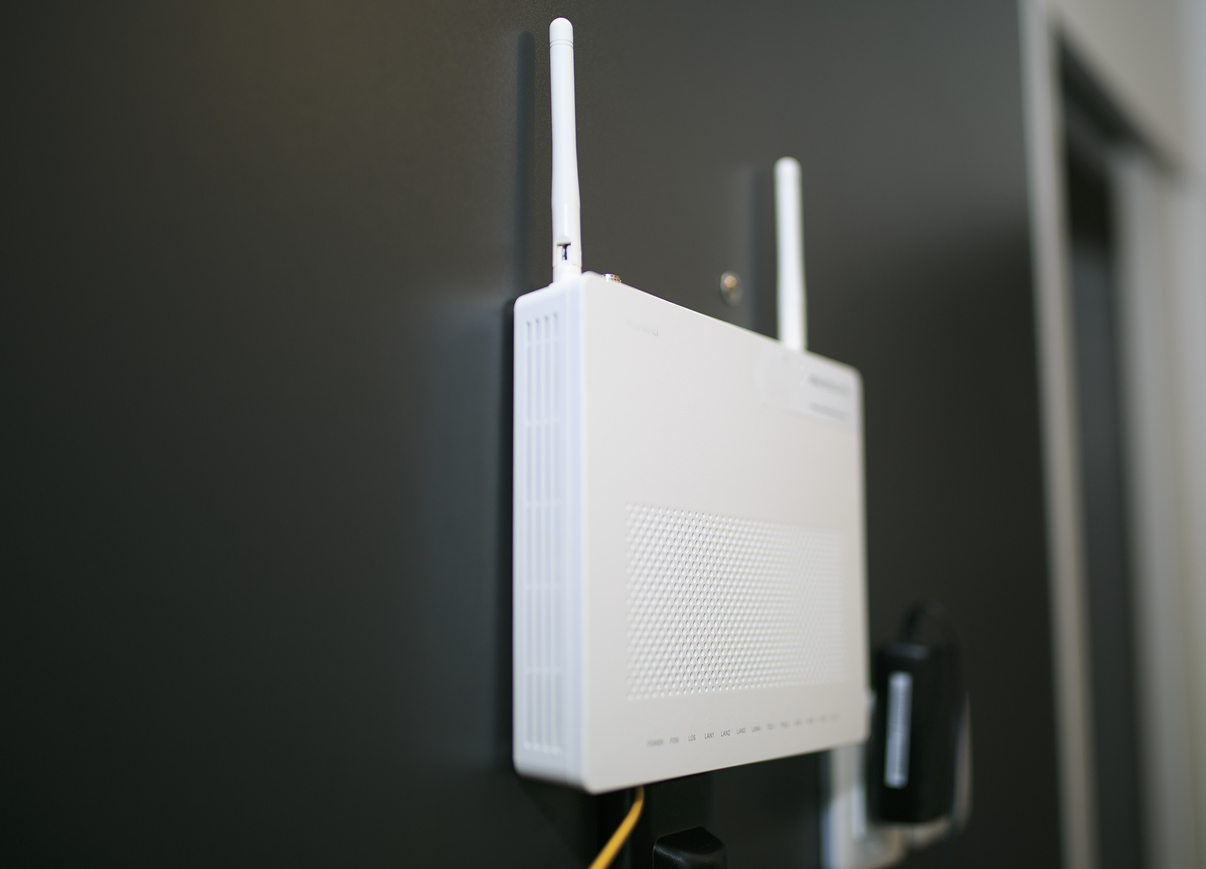
3. Boost the WiFi.
Outdoor offices can be iffy when it comes to WiFi—the farther from the router you are, the weaker the signal strength. However, a WiFi extender or mesh network can keep speeds up even if you’re far from the router. WiFi extenders typically plug into electrical outlets, while mesh networks send radio signals to a series of satellite units to boost speeds in a large house or into the backyard.
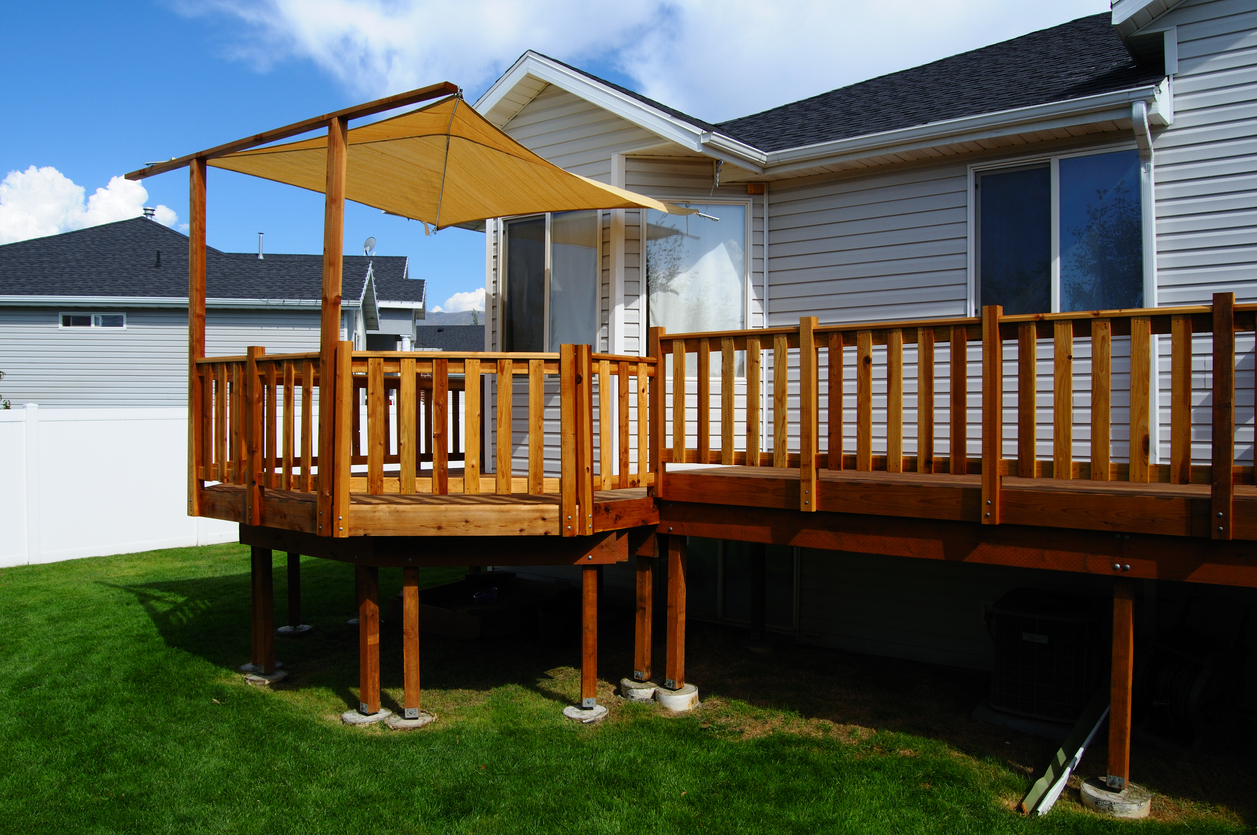
4. Protect your tech assets from the elements.
Direct sun exposure can overheat a laptop, mouse, keyboard—and of course, a working professional like you. If there’s no shady spot to work outside, create one. A patio umbrella or a pop-up canopy can provide temporary respite from the rays.
5. Create some heat.
Sun and rain aren’t the only weather issues that can complicate working outdoors. When temperatures dip, you don’t have to retreat to the dining room table. Outdoor patio heaters, available on Amazon, can keep a 6- to 9-foot radius space cozy and warm. Cozy up next to a heater when you need to be productive, and tuck it under the eaves when you’re not using it.
Related: Our Favorite Patio Heater is Easy to Transport and Provides Plenty of Warmth on Cool Nights
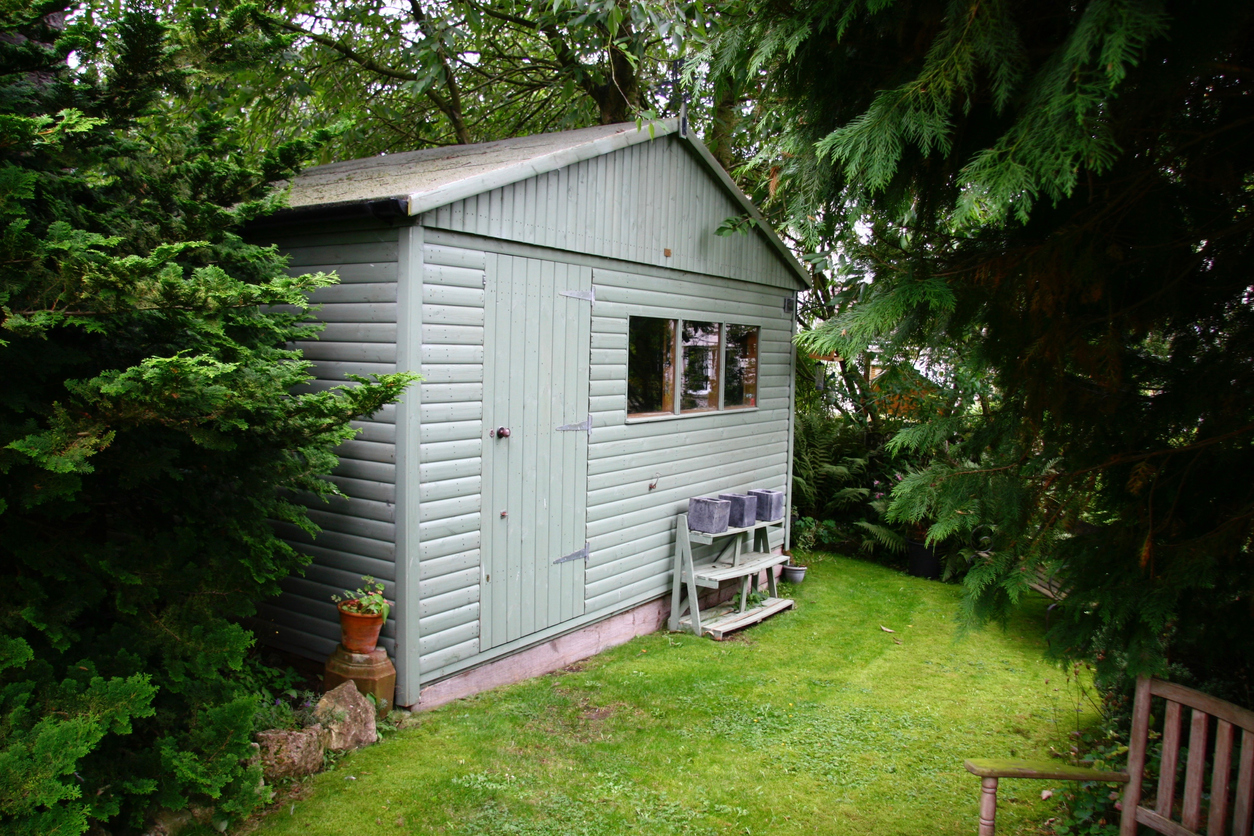
6. Build a separate space.
Pre-made sheds and playhouse kits can easily be transformed into outdoor offices. Create a room of one’s own by designating an outbuilding as your office. These spaces are so versatile—they provide protection from the elements, and give you the option of closing doors if the wind starts to blow or pets and children come out to play.
7. Ergonomics still matter.
Moving your work setup from a corner office in the city to a corner of the patio doesn’t change the fact that ergonomics matter. Wherever you work, it’s important that your body is comfortable. Be sure you have a chair that supports your back, and a table or desk that’s appropriately sized to prevent injury and strain. If your old outdoor Adirondack chairs or patio dining set doesn’t provide enough support, try a lumbar support pillow or a standing desk riser. Either can be adjusted as needed to suit your position.
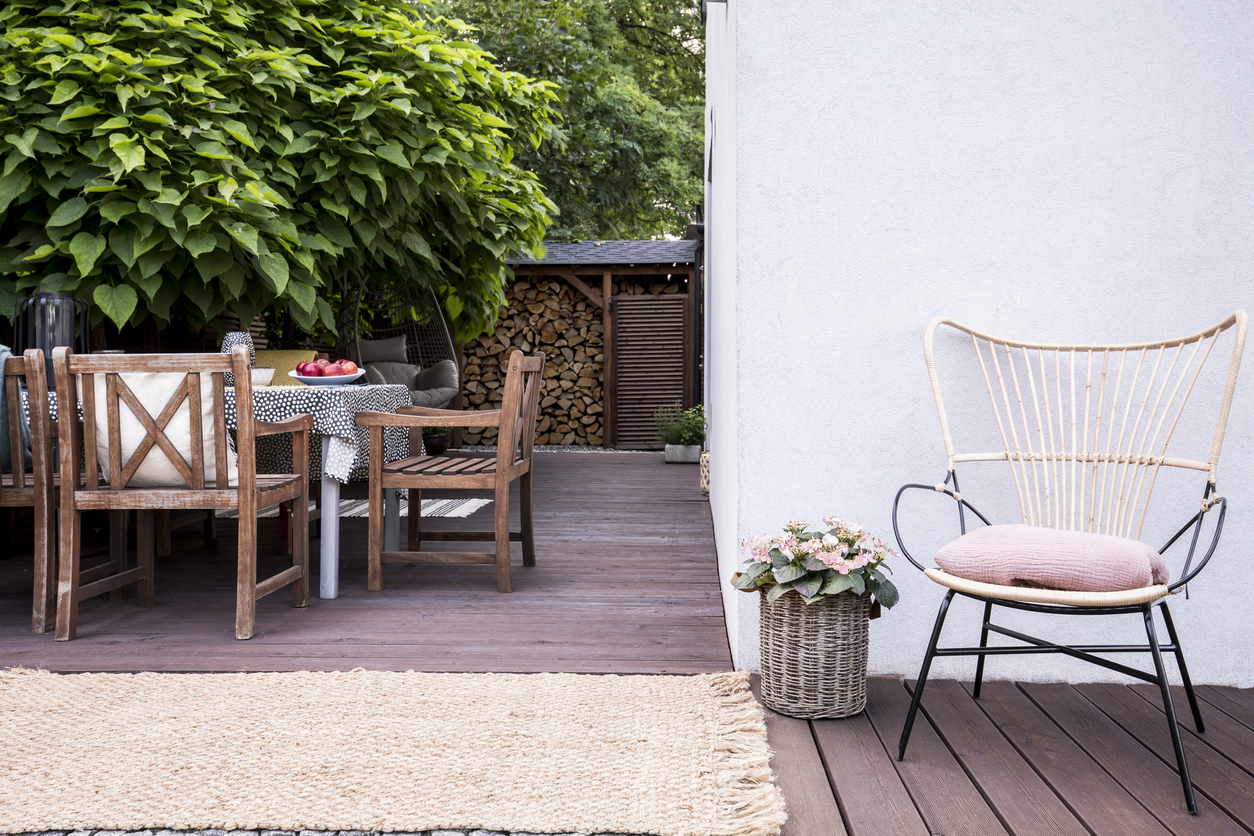
8. Roll out an outdoor rug.
An outdoor rug on a patio or inside a converted shed transforms and defines the space. Outdoor rugs add comfort and texture to any space. These rugs are made from a variety of materials, including natural fibers like cotton and jute and brightly colored plastics. Even the smallest outdoor rug can give you a place to pace barefoot while prepping for a virtual meeting.
9. Strategically arrange the furniture.
Most of us share our outdoor spaces with interloping partners, pets, kids, or neighbors. Still, there are ways we can arrange our outdoor furniture to create a private space within a larger outdoor setup. For example, placing large planters on either side of a chair tucked away in a corner creates a wall of plants that will keep others at bay while you work. As you plan, think about furniture placement in relation to the angle of the sun. Keep the sun in front of, or to the side of, your setup to prevent excess glare.
Related: These Are Our Favorite Whole-House Surge Protectors Based on Our Research and Expertise
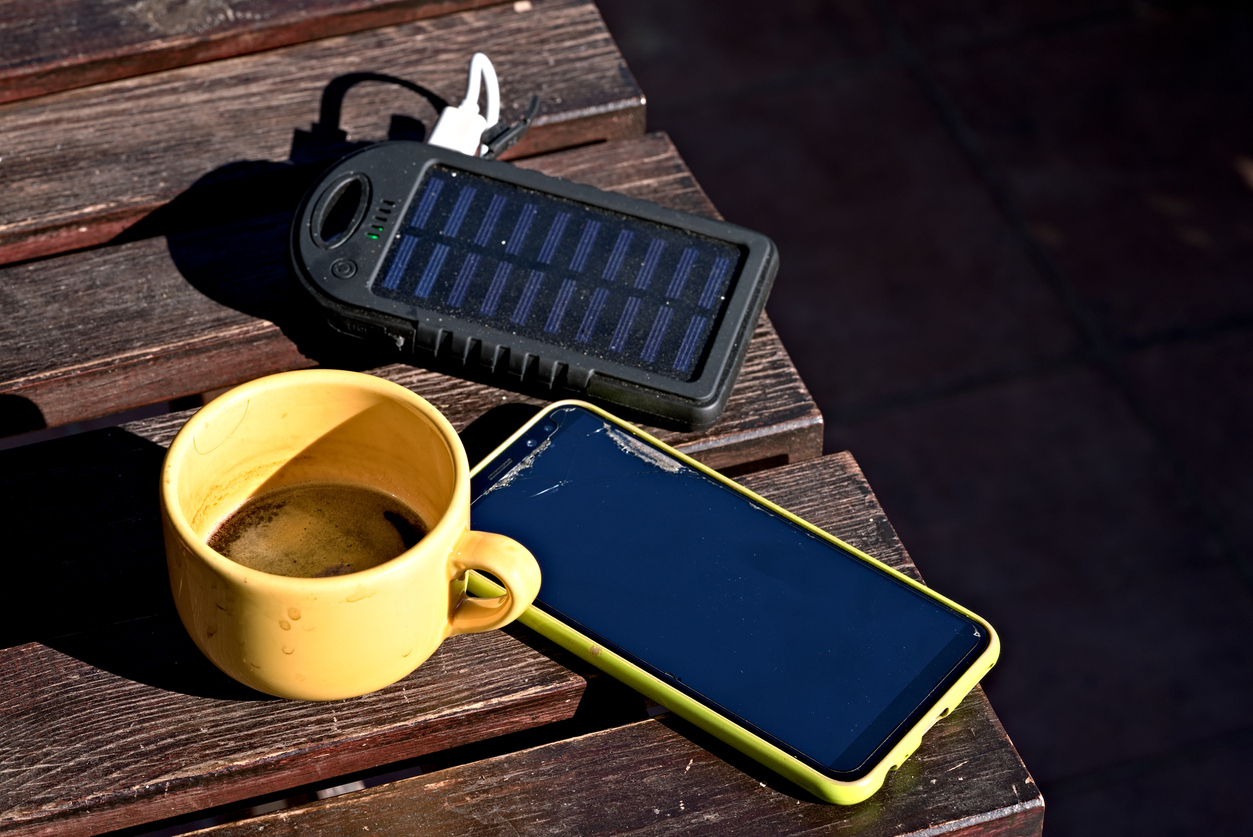
10. Power up your setup.
Assess the power needs required to keep your outdoor office running smoothly. When extension cords aren’t an option (or you just don’t want the eyesores cluttering your outdoor space), a portable power bank may be the right solution. In other situations, running an extension cord close to the house, where it stays out of sight, can provide power without interfering with the outdoor aesthetics.

